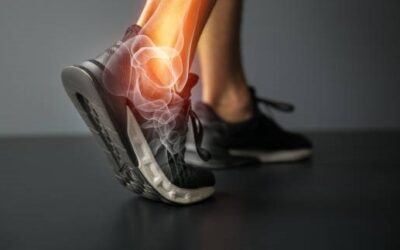The first thing you should do if you tear your ACL is to NOT PANIC!
I know, that is kind of like telling someone who is sad to cheer up. It doesn’t quite work like that. But, hopefully, this article can help reduce the fear, anxiety, and stigma associated with tearing your ACL.
Anyone who has torn their ACL can tell you how painful, traumatic, and life-changing that injury can be. Both the initial injury and the lengthy recovery process are difficult to overcome.
As you can imagine, after undergoing such a traumatic event, it is hard to recover physically- but the mental struggles of recovery are real too. They can, and most often do, stir up uncertainty about returning to a sport or the active lifestyle that you were accustomed to.
If you are involved in sports, or even if you’re a spectator, you have likely heard of someone who has had this injury.
Because you are taking the time to read this article, there is a good chance you are wondering what you can do if you tore your ACL.
Without further ado, here is what you should do if you tear your ACL.
START PRE-REHABILITATION (PREHAB) IMMEDIATELY
This is generally recommended to begin under the supervision of a physical therapist. But what if you tore it on a Saturday evening while playing in that showcase event and there are no physical therapy clinics open on a Saturday night or Sunday?
The answer is simple: begin it on your own.
Decrease the swelling
First, you want to decrease the edema and swelling. The swelling isn’t necessarily a bad thing. I mean come on- you just had a trauma to the knee. Swelling is our body responding to the tear by creating an environment for your knee to begin healing. It is also thought to stop you from using your knee as much as you normally would. We all know how hard it is to move the knee when it is swollen.
But that does not mean you should just sit around and wait for the swelling to go away.
You can do the whole icing thing, which may help a little. You can also be smart and rest the knee as much as you can- meaning don’t go out there and walk that 5K you had already signed up for.
Keep the knee moving
The pain, inflammation/swelling, and trauma response to tearing your ACL can significantly impact your ability and desire to move the knee. But you must overcome that!
Continue to bend and extend the knee. You can start by laying down and doing it against the floor or bed. You want to keep the motion that you already have. This can be crucial for the next steps in your recovery process. Your available motion will help you progress through your recovery after tearing your ACL. It can even make the recovery a little bit easier after having your ACL repaired.
Plus, the movement can help decrease the swelling as well. It is good to see your knee be able to bend and extend again!
Protect your knee
 Initially, your knee is going to feel and be very unstable. Again, it just lost a major ligament that gives it support. Add in the
Initially, your knee is going to feel and be very unstable. Again, it just lost a major ligament that gives it support. Add in the
swelling that is decreasing your muscle’s ability to contract and that can be one unsteady knee.
Be smart when you are getting around in your house and community. If it feels better with a brace, go ahead and try the brace. You can use crutches to offload the leg a bit and make it feel sturdy and supported when walking around.
Notice I am not saying you should be wheelchair-bound or bedridden after this type of injury. Just make sure you are smart about the times you are up and moving around.
Meet with a physical therapist who specializes in ACL rehab
This is to make sure that you are doing all of the above steps correctly and to see if you are ready to progress. After decreasing the pain, improving the knee motion, and reducing the swelling, you may be ready for some quad and hamstring strengthening work. This will help you regain that stability that you have lost in the knee.
This is also a perfect time to discuss what your options are moving forward. Of course, the method to correct this that has been around since 1895 (when the first ACL reconstruction was performed) is the surgery to repair it. For some, this remains the gold standard.
New research is finding that we may not need to surgically repair the ACL. Our bodies, as we already know, are dynamic and great at adapting. There are new studies revealing that having an ACL reconstruction may not be necessary.
This would be a good time to discuss your goals and educate yourself on each option so that you can make your most informed decision.
A physical therapist can also provide you with the knowledge on what to do following your ACL surgery, if that is the route you decide is best.
See an orthopedic surgeon who specializes in ACL repairs
As with a physical therapist, finding the right provider is crucial. They will also be up to date on the most current protocols regarding treatment of an ACL injury. It would also make sense to have them screen and image you for other potential injuries that occurred in the knee when you tore your ACL.
Keep these tips in mind when you tear your ACL. It is imperative that you are not fearful of this diagnosis and you begin the prehab process right away. This, coupled with seeing the right providers, gives you the best chance for optimal recovery within the quickest time frame possible.
Having trouble finding out where to start in your ACL recovery journey?
Please reach out to us! [email protected]
Or, give us a call (480-452-9191) and we would be happy to help you begin your journey!




